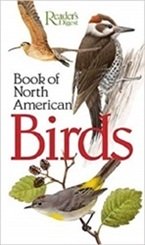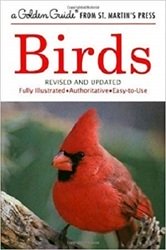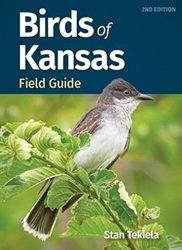My Baby Cedar Waxwing Larry
by Linda
(Michigan)
As I type this story, my baby cedar waxwing, Larry sits happily on my head.
I stick my finger up there every 15-20 minutes so he will hop up on it and I can bring him down to poop in a napkin.
I wonder if this story will ever make it online because I disagree somewhat with your article on baby birds.
I am not a rehabilitator, I am a stay-at-home mom who loves animals.
I have taken in dozens and dozens of baby animals birds, rabbits, squirrels, and groundhogs.
They have all been able to go off on their own at some point.
Your question "what should you do if you find a baby bird that appears to be a fledgling (a baby that has left the nest, but is not yet able to care for itself?)"
I believe you should always take the bird in and care for it.
This will only be for a short period as the bird is in its final stage of dependence.
While it is certainly true that the nest can be a dangerous place for a baby bird, so can the ground!
Most do not make it through this last stage.
Cats, dogs, lawnmowers, and feet can be the death of these helpless animals.
They sit quietly during this time so that they remain unseen.
Yes, their parents continue to feed them but are unable to protect them.
A computer is a wonderful tool and it is remarkably easy to search out information on your baby bird to ensure you are feeding it properly.
If the baby bird is gaping at you (opening its mouth wide, begging to be fed) and you are feeding it correctly (the right food, often enough) the bird will not become stressed.
Indications of stress include the bird refusing to eat and or closing its eyes.
The baby bird should be kept in a margarine container that is lined with a clean cloth (this will have to be changed often).
Yes, it is small and cramped but that is what it was used to.
The bird should be allowed to practice it's flying every day in a room where it cannot hurt itself.
I find a bathroom without a window to be best.
Birds can and will fly into windows and could injure themselves.
Giving baby birds this extra time to grow and develop gives them a better chance at making it in a world that is full of dangers.
Adult birds spend little time on the ground (except for robins of course) because the ground is a dangerous place.
My baby cedar waxwing, Larry, is very happy and non-stressed I assure you.
I can't see him right now (because he is sitting on my head) but I'd guess he is preening himself, which he spends a lot of time doing.
He is pulling his feathers free of the little tube-like shafts they come down from.
Larry is already a good flyer, but he still lands on the ground a lot and is not feeding himself yet.
I believe I'll have him for another 2 weeks, the last of which I will have him in a covered flight cage outside during the day so he can get used to the sights and sounds of his future environment.
Larry was brought to me by a lady who found him trying to hide at the base of the tree he was probably born in.
His parents were probably nearby, the problem is that this tree was located in the yard of a Dairy Queen and was a favorite place for children to sit and play while enjoying their ice cream.
Larry would have been stepped on for sure!
This way, he will be released in my yard where I may still have a relationship with him as I do with a starling and a sparrow who still land on my head and beg for food. (I raised them 2 summers ago)
Birds do have memory capabilities and I believe they stop by to say Hi.
I also have wild cottontail rabbits that I can feed by hand because they remember being raised by me.
Does being this "tame" put the animals in danger?
No! They are still afraid of dogs, cats, lawnmowers, and other people.
When I "show" my animals to visitors, they have to watch me interact with them through my windows, or the animals would run or fly away.
Is helping baby animals ever a mistake?
If you put a little effort into making sure you know what kind of animal you have and what its needs are, the answer is no!
note: Larry just flew down on his own to gape to me for another thin slice of cherry.
Cherries are $7.00 per pound near my home now, but I'll buy him all he needs and will continue to feed him some when he is free if he wants.
Larry also enjoys blueberries, flies (fed to him with my eyebrow plucker), and mealworms.
The first week I had him, he was also fed baby bird food designed for parrots for extra nutrition.
Cedar waxwings are very social birds and since I am his family right now, I have to break it to you, he loves to be petted, as did my starlings and all my many sparrows!
Cedar waxwings (and other birds) love to bathe so put a shallow bowl of fresh water in their cage every day.
Administrator RepliesIt's nice that it all worked out well for you and the birds and animals that you've taken in.
Unfortunately, for each bird or animal that you may have saved, thousands have died due to someone's kindness and lack of knowledge.
Yes, you can go online and find information.
You can also find misinformation on caring for wildlife.
Not everyone can tell what type of bird they've found. This makes a difference.
Not every bird is a baby cedar waxwing.
We receive many emails from young and old alike who've found baby birds and have no idea what to do.
These well-meaning people end up drowning the birds by trying to get them to drink.
We still recommend placing any found wild bird in the hands of a
licensed rehabber.
These individuals know exactly what to do to return the bird to the wild.
Rehabbers are some of the best people out there.
They've gone through the effort to get licensed and more often than not, volunteer their services.
You sound like someone who might make a great rehabber.
I might add one last point:
It's still illegal to be in possession of Larry.
Learn the Nesting, Mating and Feeding Habits of Cedar Waxwings









